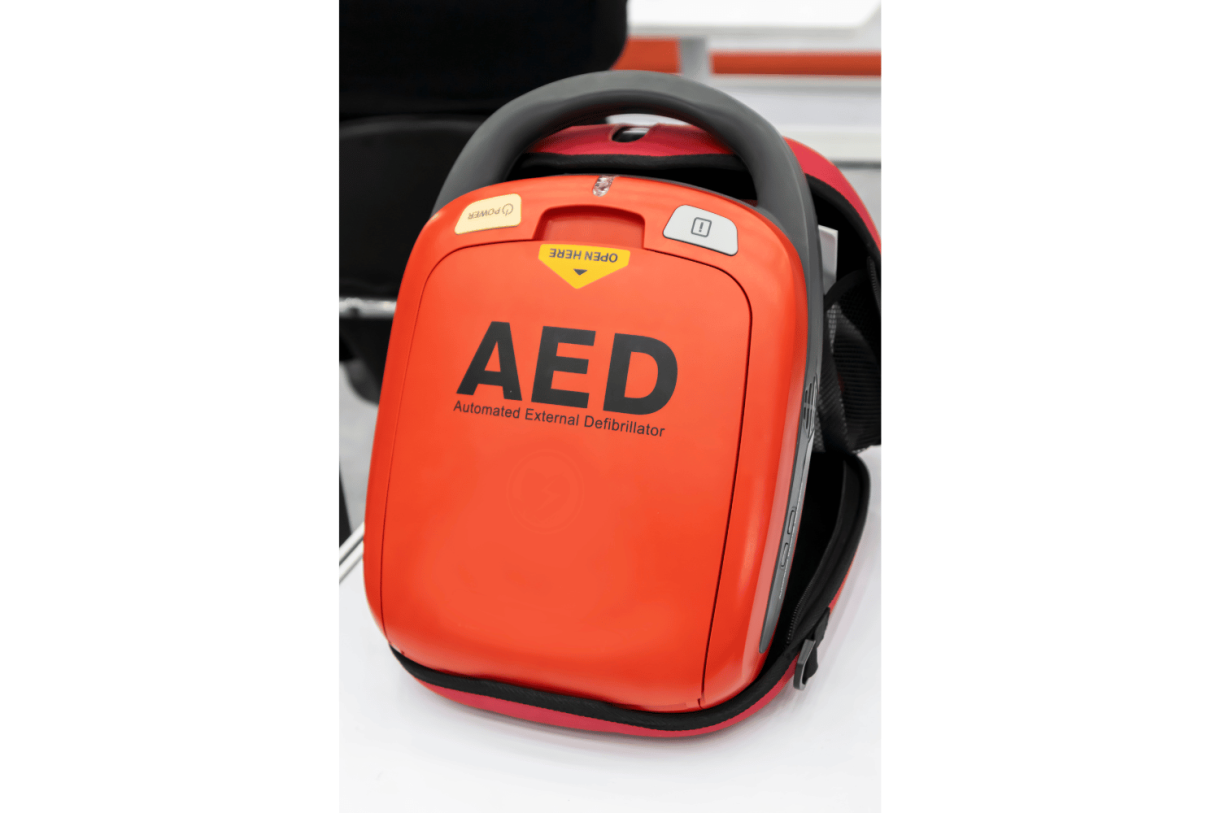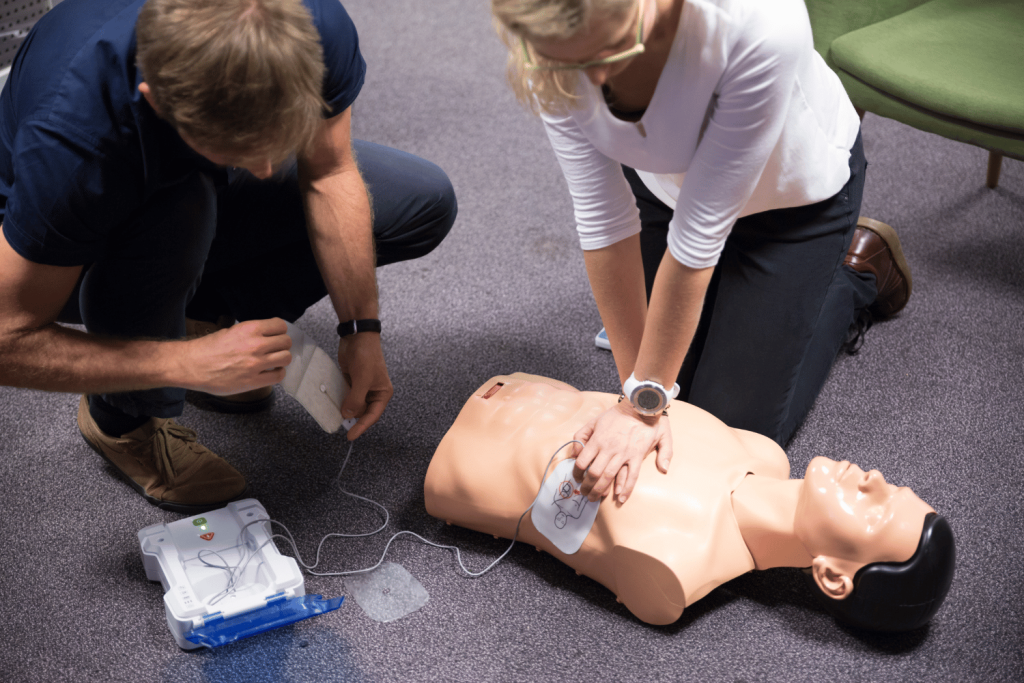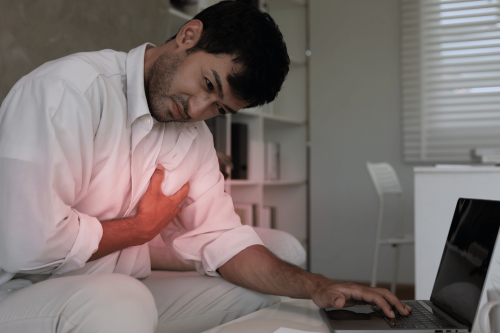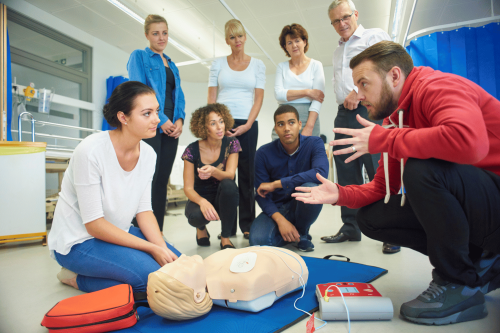
Automated External Defibrillators (AEDs) have revolutionized the way we respond to cardiac arrest emergencies. These portable, user-friendly devices are designed to analyze heart rhythms and deliver life-saving shocks when needed, significantly increasing the chances of survival.
Did you know that for every minute defibrillation is delayed, the chances of survival decrease by about 10%? This makes AEDs an essential tool in both public and medical settings, empowering bystanders and professionals alike to act quickly and effectively.
In this blog, we’ll explore what AEDs are, why early defibrillation is critical, how to use them effectively, and best practices to ensure they’re always ready to save lives. Keep reading to discover how AEDs play a vital role in cardiac arrest survival.
What is an Automated External Defibrillator (AED)?
An Automated External Defibrillator (AED) is a portable medical device used during sudden cardiac arrest. It's designed for both medical professionals and laypersons to deliver an electric shock to the heart. Its purpose is to restore a normal heart rhythm when a person’s heart suddenly stops beating effectively.
An AED works by analyzing the heart's electrical activity through electrode pads placed on the person's chest. If it detects a life-threatening, chaotic heart rhythm like ventricular fibrillation, it will advise and deliver a controlled electrical shock. This shock, known as defibrillation, briefly stops all heart activity, giving the heart a chance to reset and resume a normal, effective rhythm.
This process is critical for maintaining blood flow to the brain and other vital organs during cardiac arrest. Immediate use of an AED, combined with high-quality CPR, can significantly increase a person's chances of survival.
It is essential to use an AED as quickly as possible, as every minute without defibrillation decreases the likelihood of survival.
Importance of Early AED Use in Cardiac Arrest
Your ability to use an Automated External Defibrillator (AED) quickly can significantly impact a patient’s chances of survival during sudden cardiac arrest.
Whether cardiac arrest happens in a hospital, at home, or in a public space, early defibrillation is crucial. It boosts the patient’s likelihood of survival. But by how much? Let’s find out:
Studies consistently show that for every minute defibrillation is delayed, a person's chance of survival drops by about 10%. When bystanders use an AED before emergency medical services (EMS) arrive, survival rates can be dramatically higher.
When EMS arrives, some patients have a "shockable" heart rhythm (like ventricular fibrillation), while others do not. The outcomes for these groups are very different:
Survival rates for out-of-hospital cardiac arrest are significantly higher when an AED is used within the first few minutes. About 38% of people who received a shock from a publicly available AED survived to hospital discharge. In contrast, survival rates are much lower when defibrillation is delayed or when the initial heart rhythm is non-shockable.
Keep in mind that the data also include patients who start with non-shockable rhythms, for whom an AED shock is ineffective. Studies have shown that patients with an initial shockable rhythm are far more likely to survive if defibrillation is performed quickly.
For out-of-hospital cardiac arrest (OHCA), research shows a much higher survival rate for those with shockable rhythms who receive timely defibrillation compared to those with non-shockable rhythms.
Another study examining public-access defibrillation found that survival was highest when the time from the 911 call to the first shock was less than 5 minutes. Patients with shockable rhythms who received prompt AED treatment had significantly better outcomes. This highlights the time-sensitive nature of defibrillation and why having AEDs readily available in public places is so vital for saving lives.

First Aid Cardiopulmonary Resuscitation Course Using Automated External Defibrillator Device, AED.
How to Use an AED Effectively
Using an Automated External Defibrillator (AED) correctly is essential for improving survival rates during a sudden cardiac arrest. The success of a resuscitation attempt often depends on how quickly and effectively the AED is used, combined with high-quality CPR.
Following established protocols and best practices helps rescuers use the AED properly, increasing the chances of a successful patient outcome. So, how can you use an AED effectively?
Let’s look at the key steps for using an AED:
1. Turn On the AED and Follow Prompts
To use the AED effectively, the first step is to turn it on. Once powered on, the device will provide clear, calm voice prompts to guide you through the entire process. These instructions are designed to be easy to follow, even in a high-stress situation. Listen carefully to each step to avoid confusion and ensure you perform each action correctly and without delay.
2. Attach the Electrode Pads Correctly
The AED will instruct you to attach the electrode pads to the patient’s bare chest. The pads have diagrams showing the correct placement—one on the upper right side of the chest and the other on the lower left side. It's crucial to apply the pads to clean, dry skin to ensure a good connection. Proper placement allows the AED to analyze the heart's rhythm accurately.
3. Let the AED Analyze the Heart Rhythm
Once the pads are in place, the AED will tell you to stop CPR and not touch the patient. During this time, the device analyzes the heart’s electrical activity to determine if a shock is needed. No one must touch the patient during analysis, as movement can interfere with the reading and lead to an incorrect assessment.
4. Deliver a Shock if Advised
If the AED detects a shockable rhythm, it will charge and instruct you to press the shock button. Before pressing the button, loudly announce "Clear!" and visually check to ensure no one is touching the patient. This step is critical to everyone's safety. Press the shock button as instructed to deliver the electrical shock to the heart.
5. Resume CPR Immediately
Immediately after the shock is delivered, the AED will prompt you to resume chest compressions. It is crucial to restart CPR right away to maintain blood flow to the brain and other vital organs. Minimize the time between the shock and resuming compressions, as continuous chest compressions are essential for increasing the chances of survival.
6. Minimize Interruptions in CPR
During a cardiac arrest, it’s crucial to keep interruptions in chest compressions to an absolute minimum. Studies show that even short pauses can significantly reduce blood flow to the brain. When using an AED, practice seamless transitions between CPR and device operation. The goal is to apply the pads and deliver a shock with the shortest possible pause in compressions.
7. Follow AED Prompts Until Help Arrives
Continue to follow the AED's voice prompts. The device typically re-analyzes the heart's rhythm every 2 minutes and advises whether another shock is needed. Do not turn off the AED or remove the pads. Continue performing CPR and following the AED’s instructions until emergency medical services (EMS) arrive and take over.
8. Use a Pediatric-Specific AED if Available for Children
When treating a child, it is essential to use a pediatric-specific AED or pads if available. These devices deliver a lower-energy shock, which is more appropriate for a child's smaller body. If a pediatric AED is not available, a standard adult AED can be used as a last resort. Pad placement for children may differ; follow the diagrams on the packaging.
9. Educate and Train Regularly
Regular education and training are vital for ensuring you can use an AED effectively during an emergency. Participating in simulation exercises helps you practice the steps, improve your skills, and build confidence in high-pressure situations. Opting for a CPR and AED certification course provides essential knowledge and hands-on experience, making it easier to respond effectively when it matters most.
10. Check AEDs for Readiness
For public access AEDs or those kept at home or in a workplace, it's essential to perform regular checks to ensure they are ready for an emergency. This includes checking the battery life and ensuring the electrode pads have not expired. An AED that isn't working correctly can cause critical delays. Regular maintenance ensures the device is always ready to save a life.
Best Practices for AED Use
Following best practices for Automated External Defibrillator (AED) use is essential for saving lives and significantly impacts survival rates in cardiac arrest situations. Ensuring AEDs are accessible, well-maintained, and used by trained individuals can enhance resuscitation efforts. Regular training and clear communication will help improve these skills, providing a seamless and effective response when every second counts. Remember, proper AED use leads to timely defibrillation, increasing the chances of reviving a person in distress. Continuous improvement and commitment to these practices make a real difference in saving lives. So, stay prepared and confident, as your actions during an emergency can have a lasting impact. Integrating these practices can enhance the quality of care provided during emergencies.








 Login with Google
Login with Google Login with Facebook
Login with Facebook